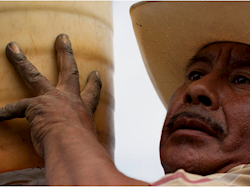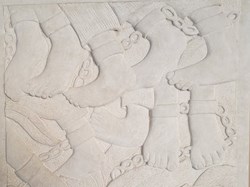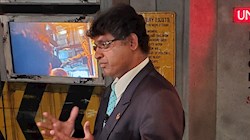October 12, 2015 Cazzie Reyes Photos
Estimates vary regarding what percentage of modern slavery is represented by forced labor in the product supply chain. What is universally agreed upon, however, is that it involves millions of people worldwide and touches the lives of everyone through the products we consume. The vast majority of the slaves are in Asia and Africa. However, modern slavery has been documented in every country on the planet except Greenland and Iceland.
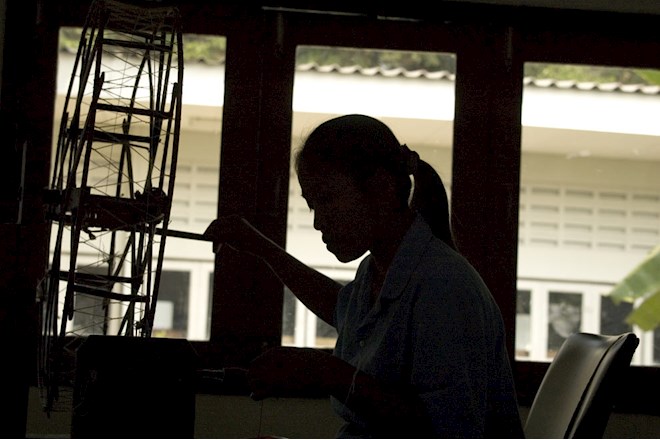
This woman in her early 20s was trafficked into a blue jean sweatshop where she and other young women were locked in and made to work 20 hours a day, sleeping on the floor with little to eat and no pay. She managed to escape and was brought to the government-run Baan Kredtrakarn shelter in Bangkok. After a few days, when she felt safe enough to tell her story to the director, the police were informed; they raided the sweatshop, freeing 38 girls between ages 14-26.
©Kay Chernush for the U.S. State Department

Escaping desperate conditions of forced labor and political repression at home, these Burmese laborers look to commercial fishing in Thailand as a way to a better life. Like illegal or marginalized immigrants everywhere, they are prey to unscrupulous traffickers who, for a fee, sell them to greedy ship captains and exploiters.
©Kay Chernush for the U.S. State Department
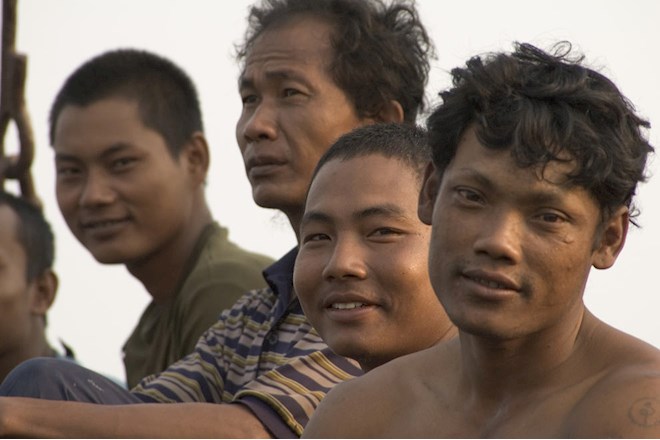
Burmese migrants who are often trafficked onto fishing ships are kept at sea for months and even years at a time. If they protest and ask to be put ashore, they may be threatened at gunpoint, locked in containers or fired and not paid for their work.
©Kay Chernush for the U.S. State Department
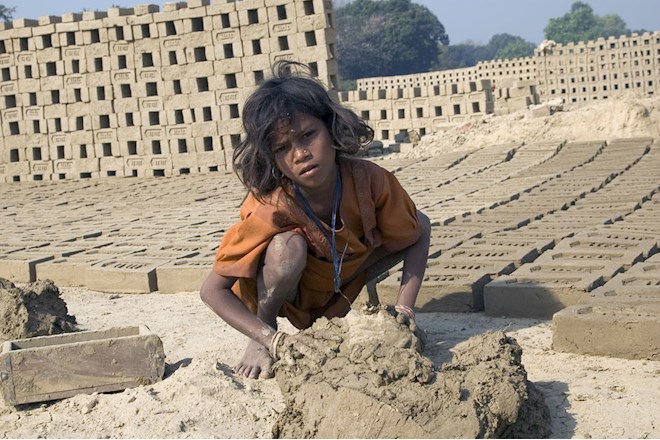
A nine-year-old girl toils under the hot sun, making bricks from morning to night, seven days a week. She was trafficked with her entire family from Bihar, one of the poorest and most underdeveloped states in India and sold to the owner of a brick-making factory. With no means of escape and unable to speak the local language, the family is isolated and lives in terrible conditions.
©Kay Chernush for the U.S. State Department
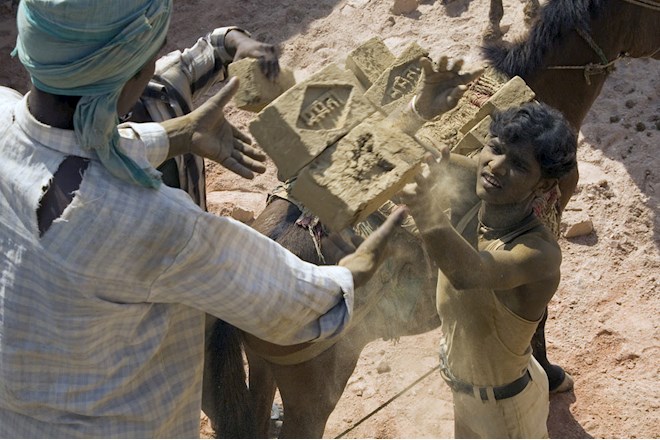
Human trafficking involves the use of force, fraud or coercion to enslave a person. Sometimes traffickers use a bond, or debt, to keep a person trapped. Many workers around the world fall victim to debt bondage when they assume a debt as part of their employment or inherit debt in more traditional systems of bonded labor. Especially in South Asia, people can be trapped in debt bondage from generation to generation.
©Kay Chernush for the U.S. State Department
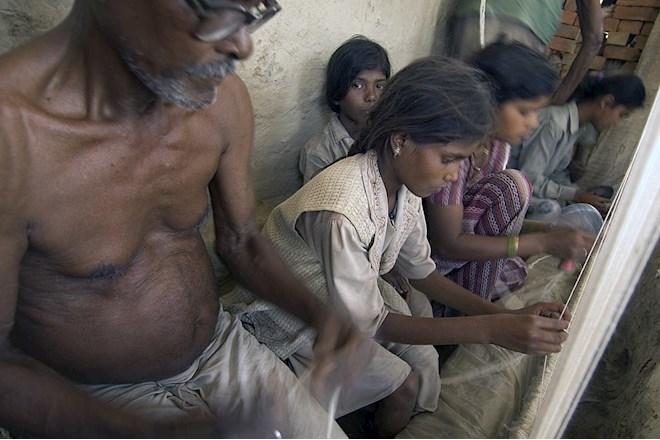
Carpet weavers like this family are usually Dalits or Untouchables, the lowest caste in South Asian society. In many instances, the children are helping a family member or someone else in their village who has fallen into debt. An offer is made to place a loom in their hut so they can pay off their debt, but this only ensures their enslavement, sometimes for generations.
©Kay Chernush for the U.S. State Department
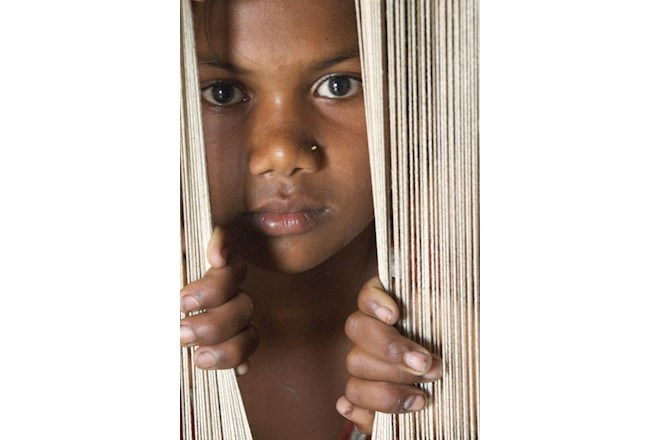
Children like this young girl are prized in the carpet industry for their small, fast fingers. Defenseless, they do what they're told, toiling in cramped, dark, airless village huts from sunrise until well into the night.
©Kay Chernush for the U.S. State Department
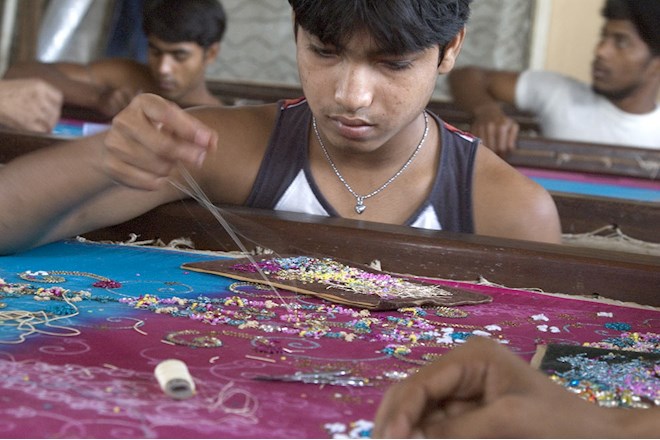
Young men sew beads and sequins in intricate patterns onto saris and shawls at a zari workshop in Mumbai, India. The boys, who arrive by train from impoverished villages across India, often work from six in the morning until two in the morning the next day. Some sleep on the floor of the workshop. If they make the smallest mistake, they might be beaten. They all say they work to send money back to their families, but some employers are known to withhold their meager pay.
©Kay Chernush for the U.S. State Department
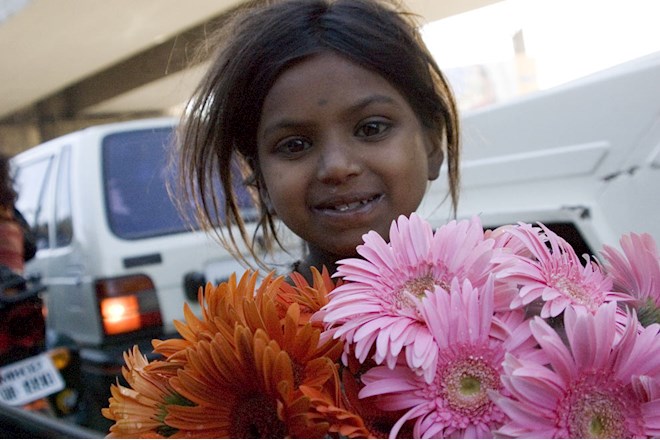
Street kids, runaways or children living in poverty can fall under the control of traffickers who force them into begging rings. Children are sometimes intentionally disfigured to attract more money from passersby. Victims of organized begging rings are often beaten or injured if they don't bring in enough money. They are also vulnerable to sexual abuse.
©Kay Chernush for the U.S. State Department
of









Related Actions
International Day for the Remembrance of the Slave Trade and its Abolition
August 23rd is International Day for the Remembrance of the Slave Trade and its Abolition. Honor it by planning a trip to the National Underground Railroad Freedom Center in Cincinnati, OH.
Read "Labor Trafficking and Debt Bondage: 'Tip of the Iceberg'" by Harold D'Souza
Harold D'Souza is a survivor of forced labor and bonded labor. Read his End Slavery Now guest blog post.



